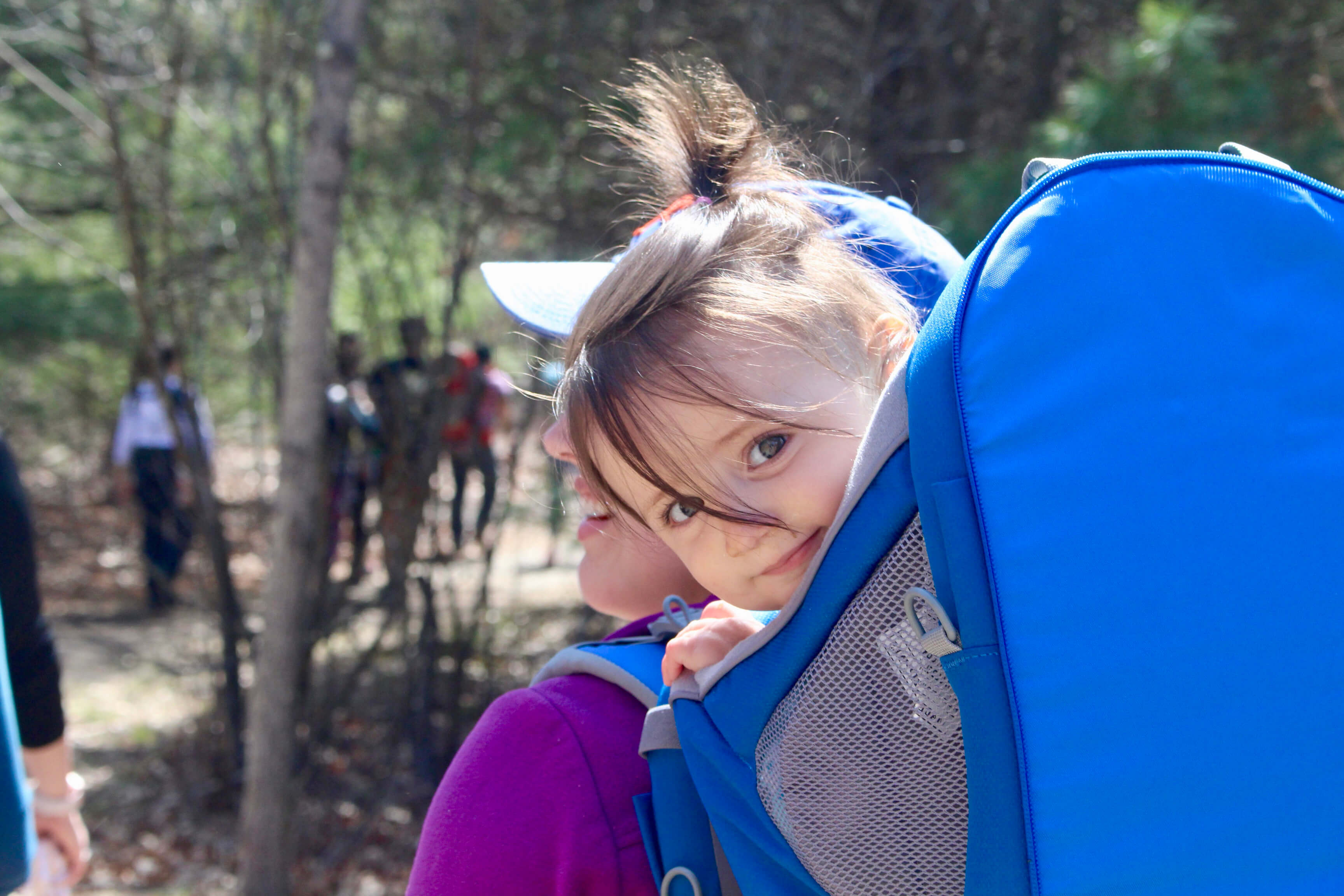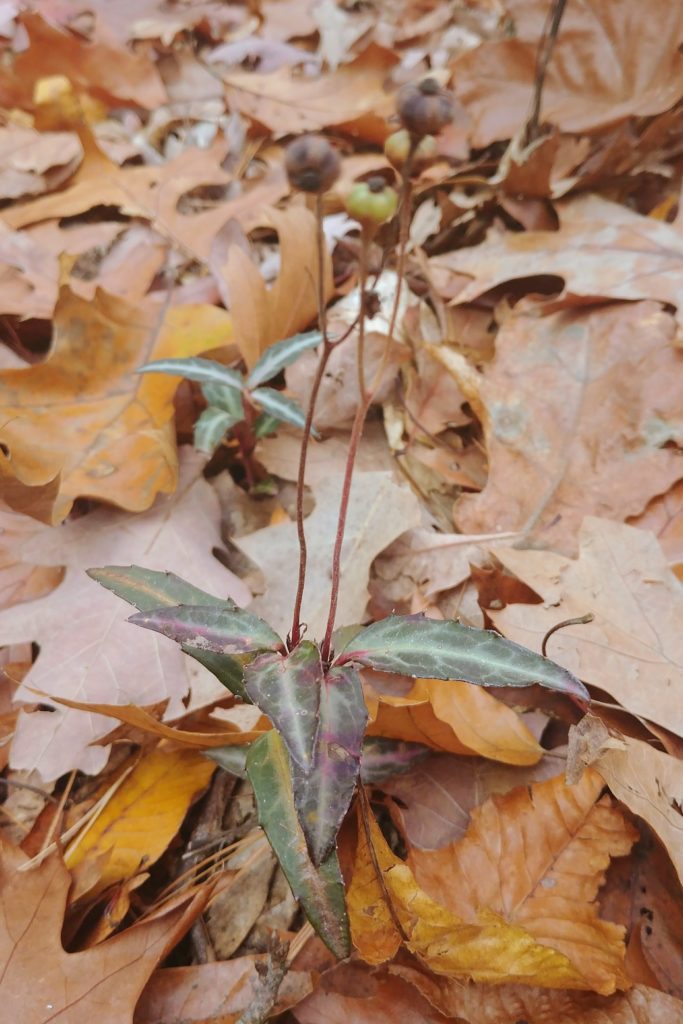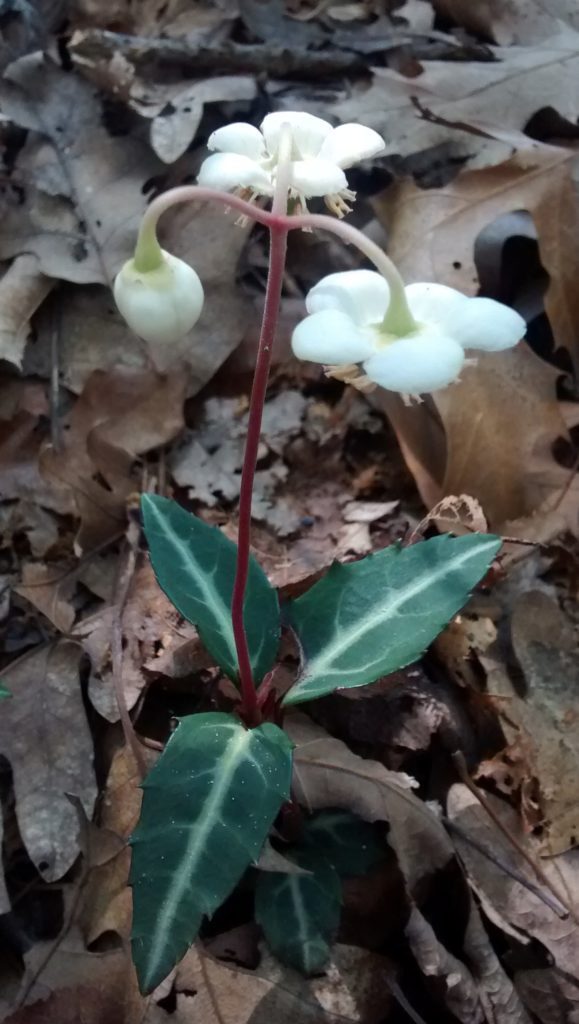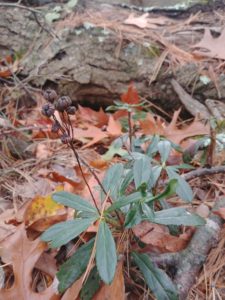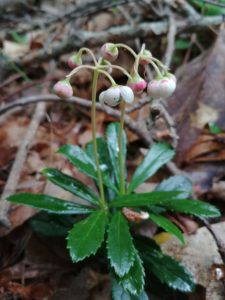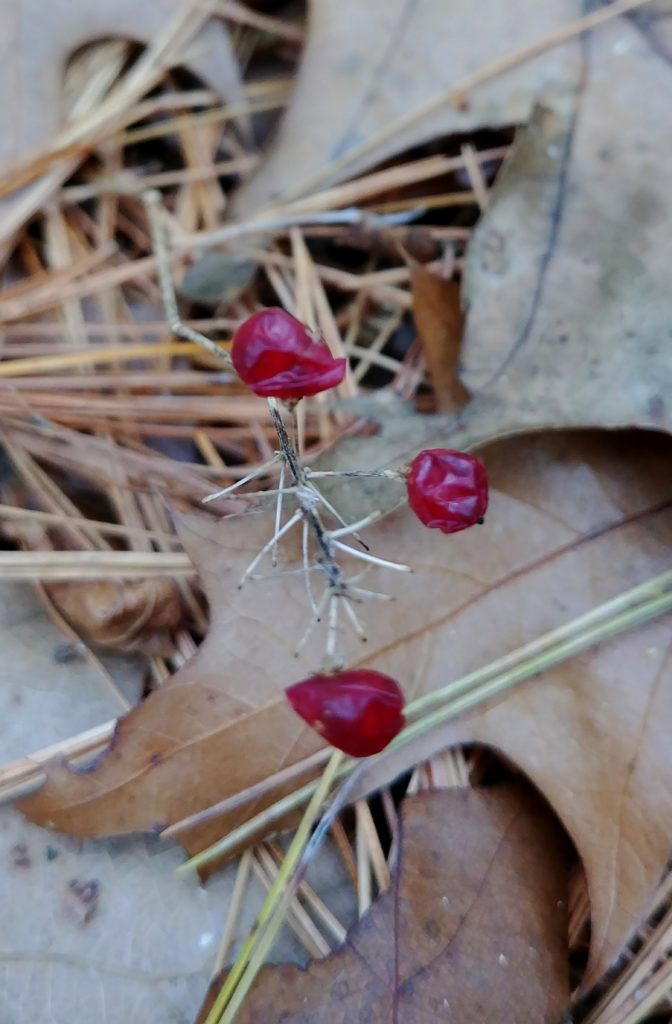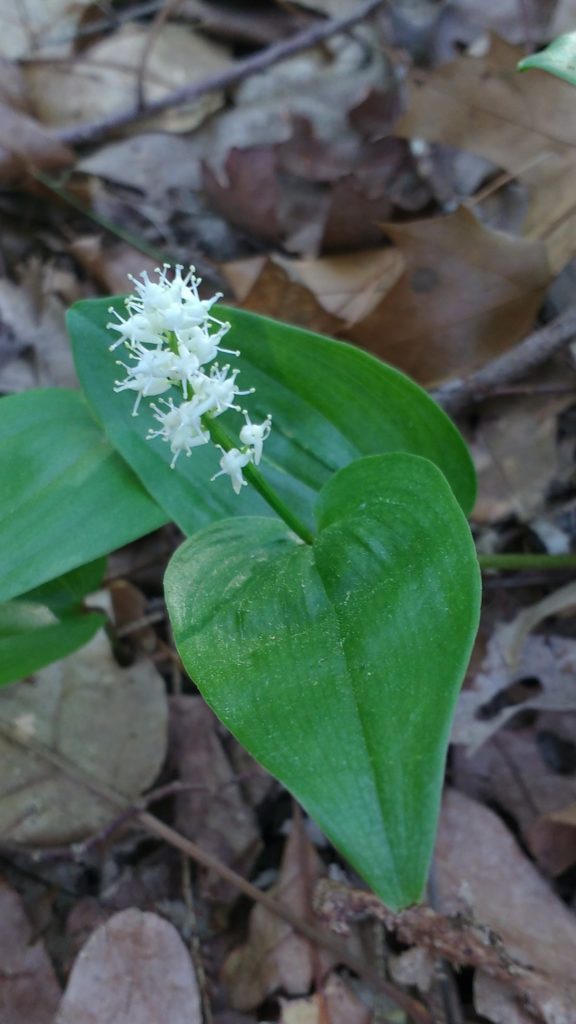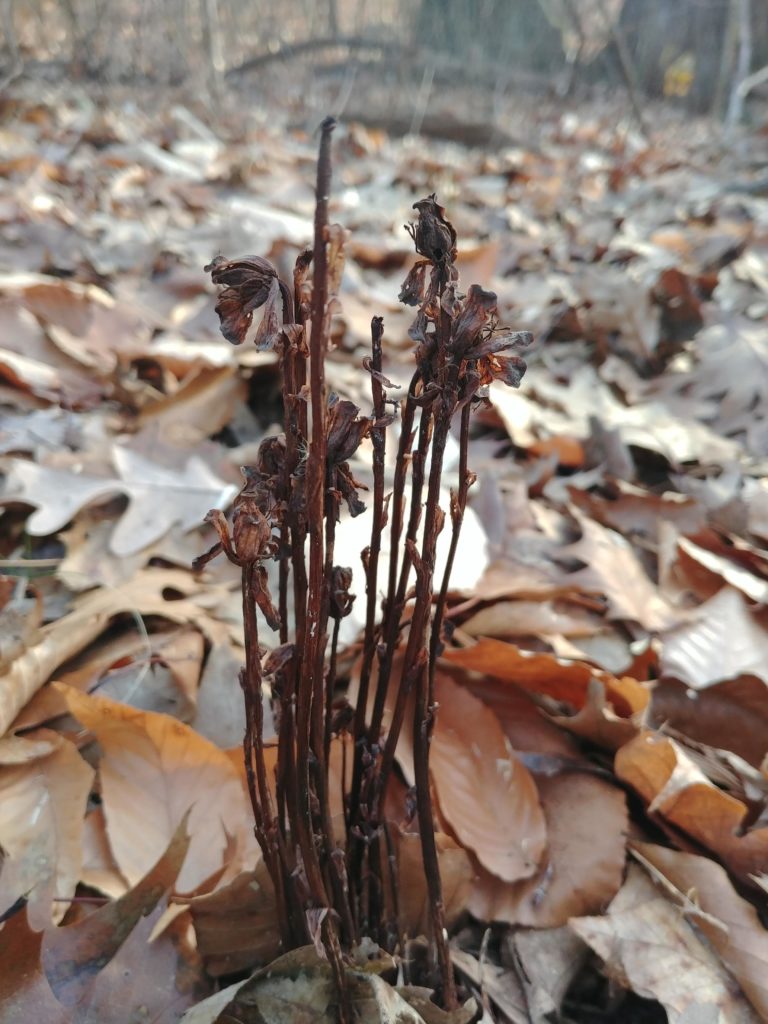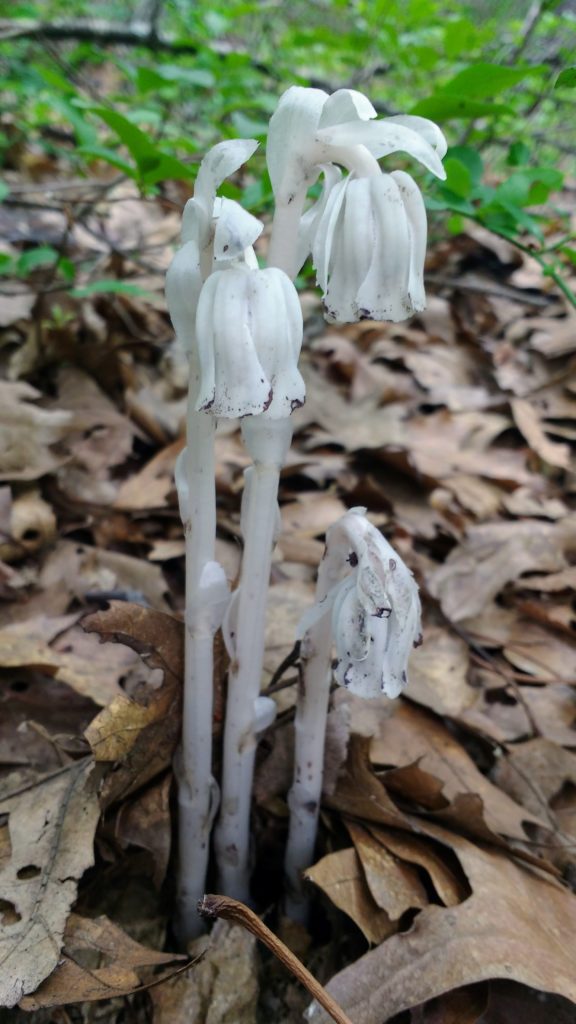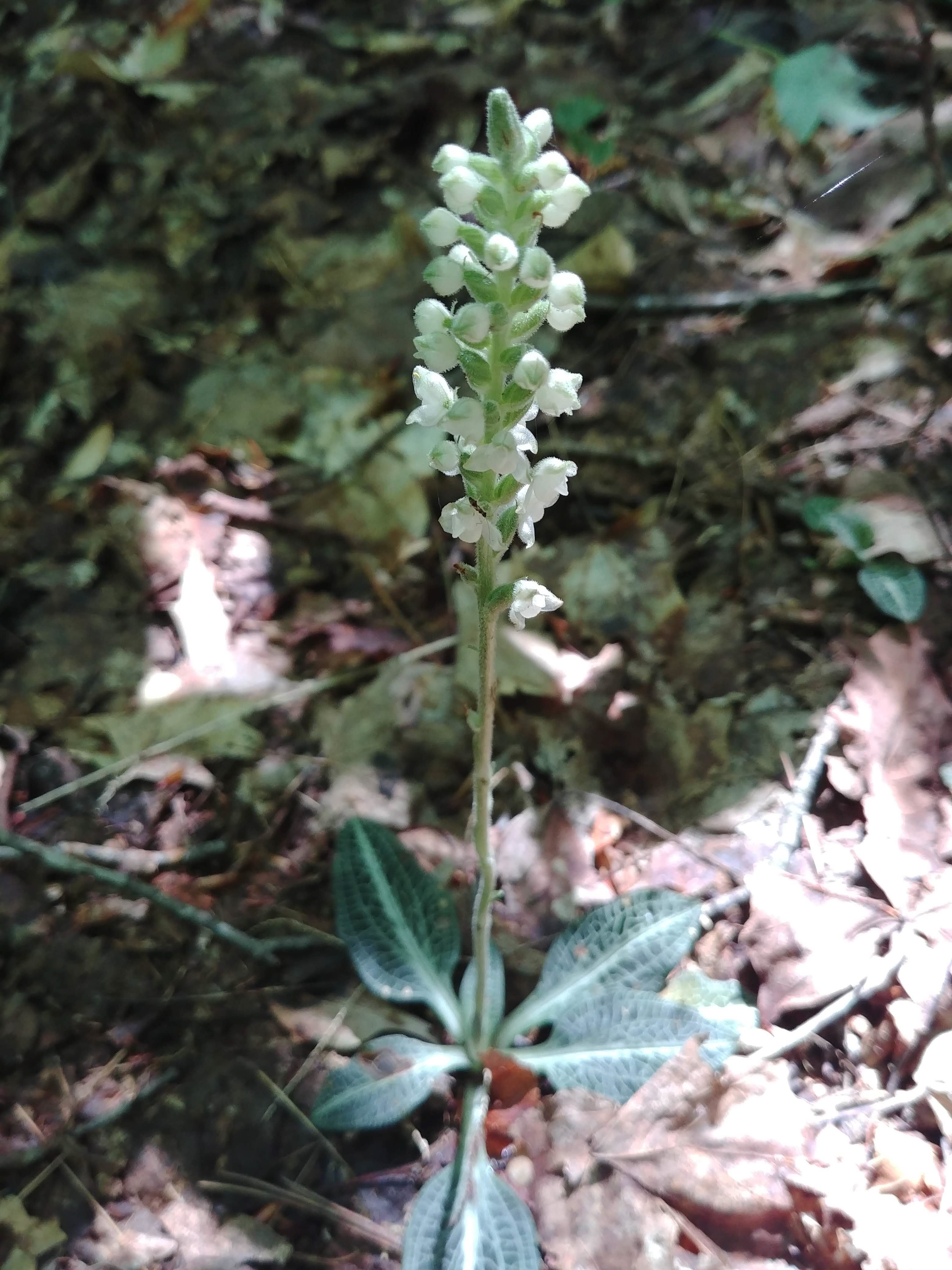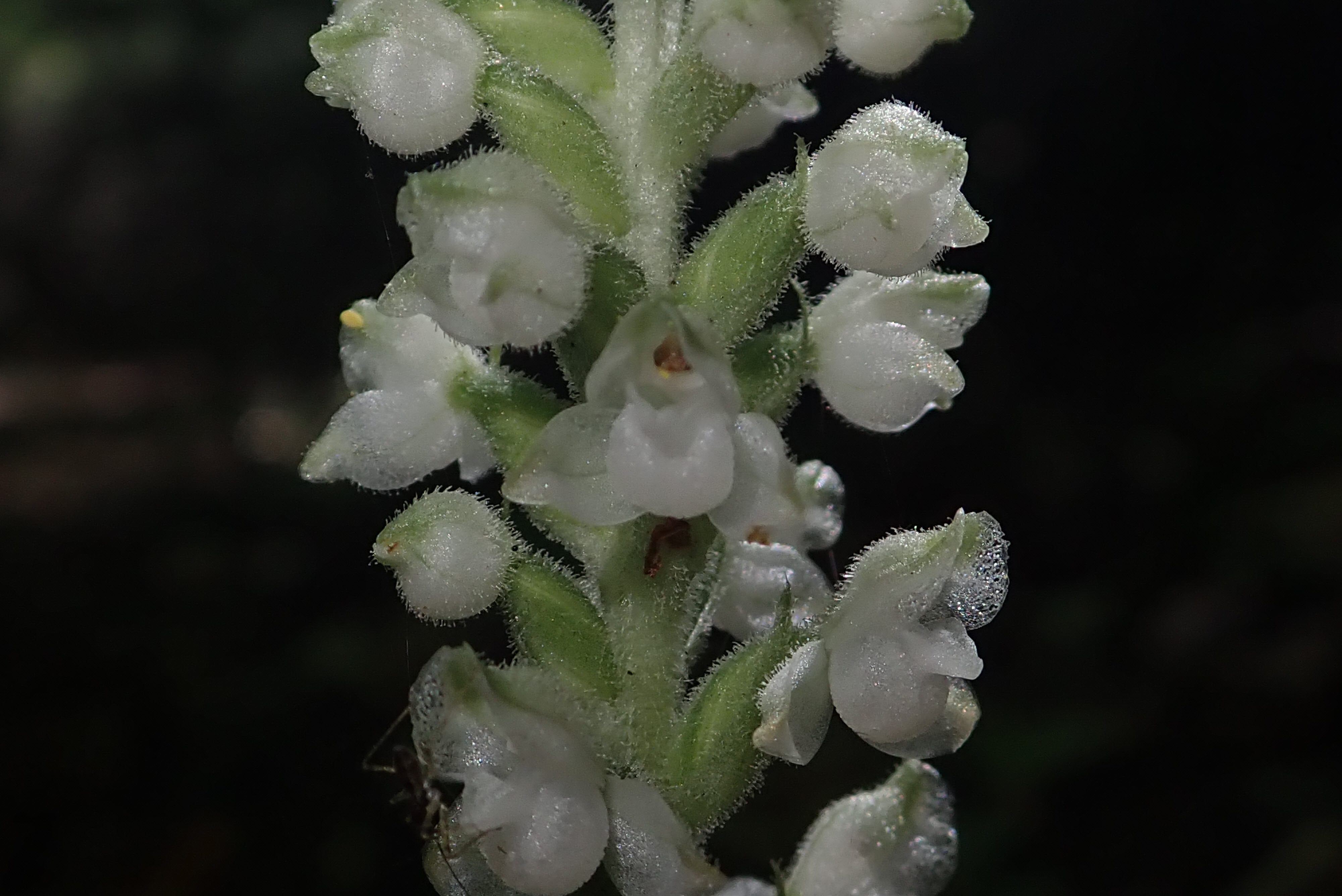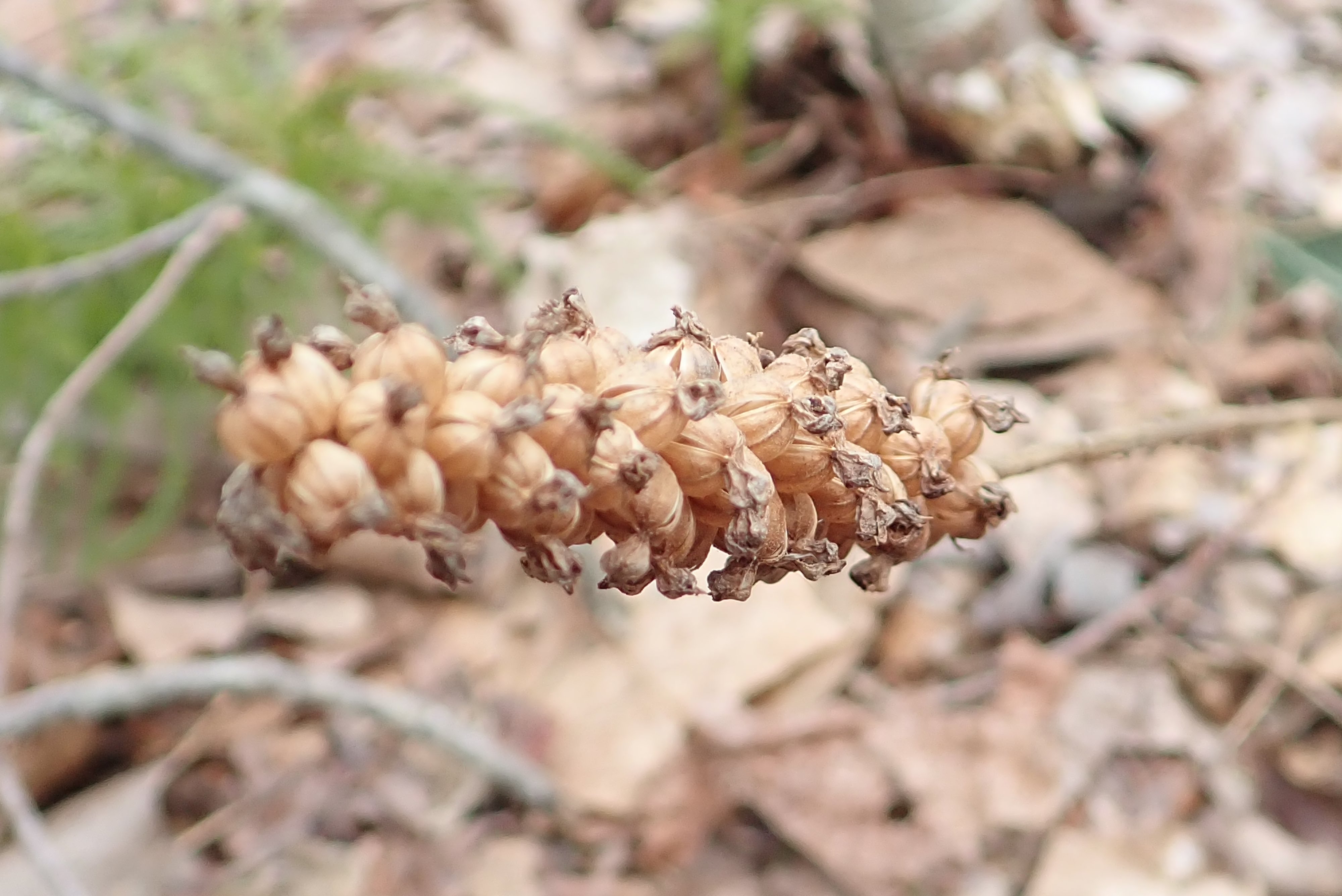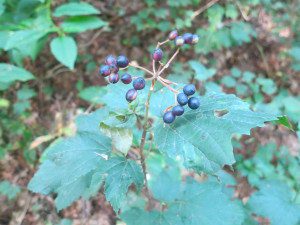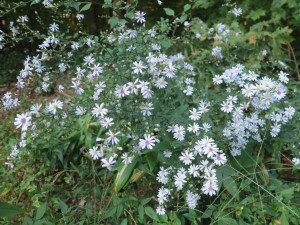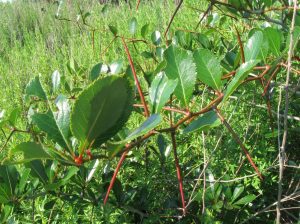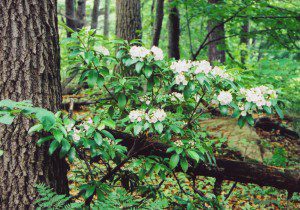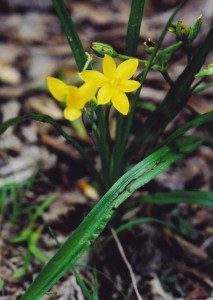By March, plants, animals and human visitors in the Fells are all getting antsy for spring, and frustrated by the distinct possibility of more snow at any time in the month. Hope is on the way however as spring officially begins this month and early signs of spring are everywhere. Early in the month our clocks change. This will make it darker in the early morning for a while, for those of you who like to walk in the Fells then. But now of course there is more light in the evenings.
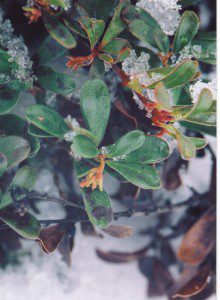
Bearberry buds
Even in February buds on several woody plants were beginning to fill out. By March this is clearly evident, for example on blueberry and huckleberry bushes. And the evergreen ground-plants, if they’ve had a decent covering of snow during the coldest days of the winter to avoid damage, are now developing their buds. Bearberry, for example, is filling out its flower buds ready for blooming in late April.
Skunk Cabbage can be seen at the water’s edge of streams or in swampy areas where water is flowing through. It has been blooming by early March in recent years, and as such is the first non-woody plant to bloom in these parts, but ‘bloom’ hardly seems the right word for a flower that would not win a beauty contest, made worse with the skunk-like smell if the plant is crushed. The flowering-body, called the spadix, looks to me like a Faberge egg sitting in its little housing called the spathe. It is related to and has the same structure as an arum lily. The bad smell and even look of rotting meat attracts flies, some of the few pollinators around so early in spring . Later, very large bright green leaves develop.
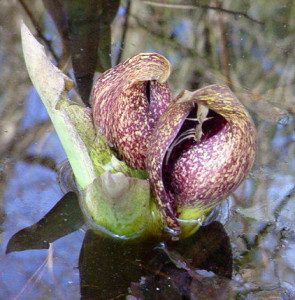
Skunk Cabbage
March 20th or 21st (depending on the year) marks the official beginning of spring. But with our latitude here in the Boston area at 42 North the literal equinox – i.e. when the length of day and night are exactly the same – occurs four days earlier when the sun rises at 6.53am and sets at 6.53pm on the Summer-time clock. From then on we can really feel the growing strength of the sun and both plant and animal life will take advantage of the greater amount of sunlight. On warm days keep an eye out for the Mourning Cloak butterfly – a big dark brown job with creamy-yellow edging.
But not all activity is during the day. Towards the end of March, on reasonably mild, damp nights, spotted salamanders gather at vernal pools in the Fells to congregate and inseminate. In recent years vernal pool expert Matt Burne has led expeditions to observe this amazing sight. Send me an email if you’re interested in signing up.
Here is a report from a few years ago:
“About 20 of us welcomed spring by attending the Friends’ Salamander Migration Program. After checking for over a week the spotted salamanders did not disappoint, appearing at their ancestral pool to mate and provide a new generation for future amazement.
One solitary individual was noted on Thursday, March 25th, having traveled over a dry woodland. A light rain the following evening encouraged about eighteen others to arrive by 9pm. Later, at midnight, congressing was at full tilt with upwards of three dozen salamanders participating. It was repeated the next night.”
On March 28, 2005, on a very rainy night, it was my joy to be part of a small group led by Hue Holley to a pool in the Fells. We saw about 20 salamanders. They were bigger than I expected – six to eight inches long – and I was struck by their determination to get to the pool, up over rocks and slithering over ice. The photo at the top shows a couple who made it.
And their fellow amphibians, the Spring Peeper frogs and Wood Frogs, the latter sounding like ducks, are also active towards the end of March in the pools and swampy areas in the Fellls. And of course song birds are coming back.
Wild Turkeys are also about in the Fells this time of year – their mating season.
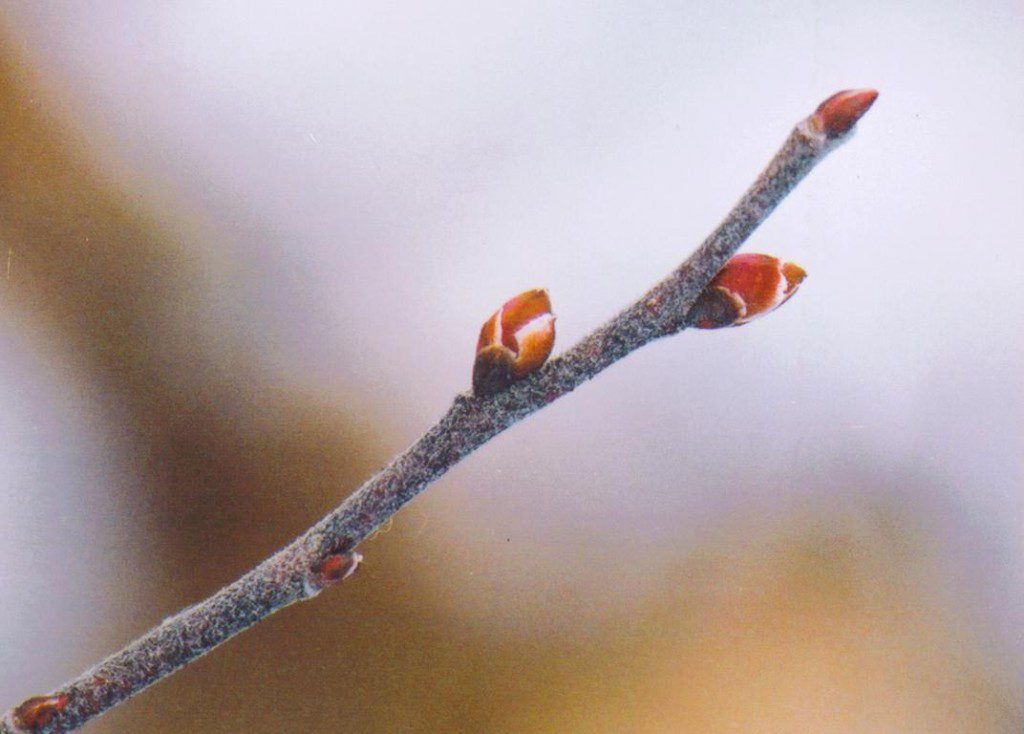
Huckleberry Bud
The information and images in this post initially appeared on Found in the Fells, a project of Friends of the Middlesex Fells Board Chairman Dr. Bryan Hamlin.
